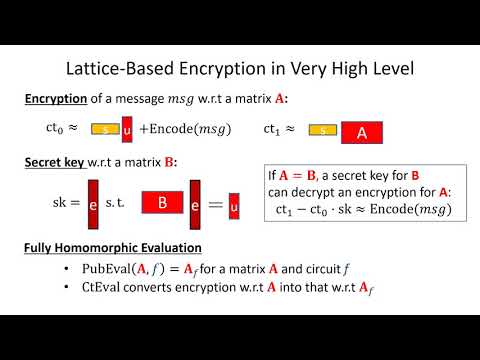CryptoDB
Adaptively Secure Inner Product Encryption from LWE
| Authors: | |
|---|---|
| Download: | |
| Abstract: | Attribute-based encryption (ABE) is an advanced form of encryption scheme allowing for access policies to be embedded within the secret keys and ciphertexts. By now, we have ABEs supporting numerous types of policies based on hardness assumptions over bilinear maps and lattices. However, one of the distinguishing differences between ABEs based on these two breeds of assumptions is that the former can achieve adaptive security for quite expressible policies (e.g., inner-products, boolean formula) while the latter can not. Recently, two adaptively secure lattice-based ABEs have appeared and changed the state of affairs: a non-zero inner-product (NIPE) encryption by Katsumata and Yamada (PKC'19) and an ABE for t-CNF policies by Tsabary (CRYPTO'19). However, the policies supported by these ABEs are still quite limited and do not embrace the more interesting policies that have been studied in the literature. Notably, constructing an adaptively secure inner-product encryption (IPE) based on lattices still remains open. In this work, we propose the first adaptively secure IPE based on the learning with errors (LWE) assumption with sub-exponential modulus size (without resorting to complexity leveraging). Concretely, our IPE supports inner-products over the integers Z with polynomial sized entries and satisfies adaptively weakly-attribute-hiding security. We also show how to convert such an IPE to an IPE supporting inner-products over Z_p for a polynomial-sized p and a fuzzy identity-based encryption (FIBE) for small and large universes. Our result builds on the ideas presented in Tsabary (CRYPTO'19), which uses constrained pseudorandom functions (CPRF) in a semi-generic way to achieve adaptively secure ABEs, and the recent lattice-based adaptively secure CPRF for inner-products by Davidson et al. (CRYPTO'20). Our main observation is realizing how to weaken the conforming CPRF property introduced in Tsabary (CRYPTO'19) by taking advantage of the specific linearity property enjoyed by the lattice evaluation algorithms by Boneh et al. (EUROCRYPT'14). |
Video from ASIACRYPT 2020
BibTeX
@article{asiacrypt-2020-30684,
title={Adaptively Secure Inner Product Encryption from LWE},
booktitle={Advances in Cryptology - ASIACRYPT 2020},
publisher={Springer},
doi={10.1007/978-3-030-64840-4_13},
author={Shuichi Katsumata and Ryo Nishimaki and Shota Yamada and Takashi Yamakawa},
year=2020
}

